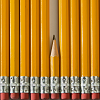Or search by topic
Number and algebra
Geometry and measure
Probability and statistics
Working mathematically
Advanced mathematics
For younger learners
Does This Sound about Right?



A scientist makes a set of estimates of various physical quantities. Can you work out how the scientist made her estimates by reproducing the calculations? Do the answers sound about right, or has the scientist made any significant mistakes?
1. A bottle of water contains 500cm$^{3}$ of liquid. I fill a crate measuring 1m by 50cm by 50cm with bottles of water to take on a field trip. I estimate that the crate contains 500 bottles of water.
2. The number of rings a tree has on its trunk can tell you how old it is. On a tree stump I measure the distance between two adjacent rings and find that it is 0.6cm. The diameter of the stump is almost half a metre. I estimate that the tree was 42 years old when it was cut down.
3. Today I ate a 30g packet of crisps at morning break time, as I always do, so I estimate that I eat almost 11kg of crisps a year.
4. A packet of sugar weighs 1kg. My friend and I take two spoons of sugar in our coffee and we each drink 4 cups per day. One packet should just about last us for the two month field trip that we are planning.
5. My round trip to work each day is about 22 miles, but I can claim mileage from work. I estimate that I can claim for 8000 miles each year.
6. Last month the energy costs in my lab were £560. I estimate that my energy costs per year will be £7000.
7. I have a large mound of building rubble which needs disposing of. The mound is about 2 metres high in the middle and about 3 metres across. I estimate that there is about 4.7 cubic metres of rubble which needs to be removed, so I should be safe ordering a 5 cubic metre skip.
8. A very large waterfall measures 170 metres across. I measure the flow rate in the centre and it is 124 cubic metres of flow per metre per minute. I estimate that 632 metric tonnes of water flows over the waterfall per hour.
9. My vegetable plot for testing variations of plants measures 9.5 by 11 metres. I test two square metres of ground and find 53 worms in one section and 42 worms in the other. I estimate a population of 5000 worms in the vegetable plot.
You may also like
Squaring the Circle
Bluey-green, white and transparent squares with a few odd bits of shapes around the perimeter. But, how many squares are there of each type in the complete circle? Study the picture and make an estimate.



